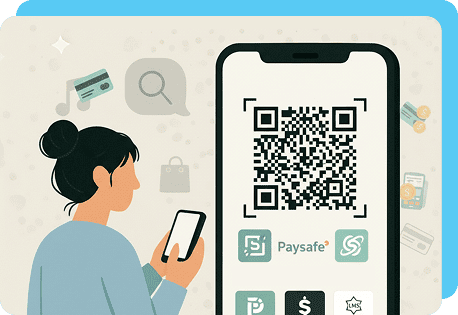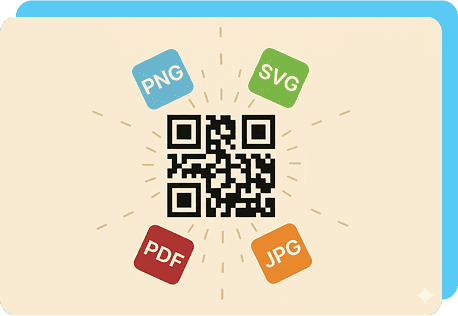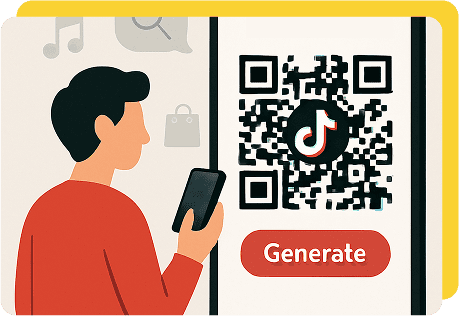What Is a Facebook Page QR Code?
A QR code is a scannable type of barcode that stores tons of information in a few black-and-white pixels.
A QR for a Facebook page specifically brings scanners to a particular page on Facebook (like event pages, groups, or your business page), with no need to search for your business or type in a page name URL.
Learning how to generate a QR code for a Facebook page is particularly handy if you need to make it easier for customers to connect with you.
Why Make a QR Code for a Facebook Page?
You might have seen other businesses request customers or clients to follow their Facebook page, something like “Follow our Facebook Page at: @nameofcompany” on their packaging or business card.
While this is solid marketing, it requires one too many steps, decreasing the likelihood of follow-through.
QR codes come with a range of advantages for Facebook pages. Let’s take a look at them below:
- Removes friction: Scanning a QR code is a one-step process, helping people get to your Facebook page, a story, or a status update without dealing with spelling mistakes or the search process. It reduces customer friction points, making it super easy for customers to find you.
- Bridges online and offline marketing: With a Facebook QR code for your page, you can add it to physical marketing materials to bridge your online and offline efforts, like having a poster lead to a Facebook promotional video.
- Tracks performance: Dynamic QR codes can give you insights into how many people have scanned your code, when, and from where, so you can use that information to inform your overall Facebook strategy.
- Encourages immediate action: Whether you want people to leave a review or join a Facebook group, a QR code fosters immediate action, as they can perform the action in seconds.
- Works across multiple marketing materials: QR codes can be placed on anything from posters to product packaging and business cards, allowing you to promote specific content or time-sensitive offers.
- No need to hire a designer: Easily generate a QR code to make your brand look tech-savvy and polished without having to hire a dedicated designer to create one.
How To Create a QR Code for a Facebook Page
Convinced of the perks of a QR Code for Facebook, but aren’t sure where to start? OnlineQRCode provides an easy five-step process to creating one, and we’re about to show you how to generate a Facebook QR Code using our platform.
Create a QR CodeGreat Places to Put Your Facebook QR Code
Once you’re happy with your QR code, you’ll need to put it somewhere so people have a chance to scan it. Different businesses will fare better from having their Facebook QR codes in different places. Consider items your customers interact with and see most frequently. Here are a few examples.
Books
The back or dust jacket of a book, if you’re an author, work wonders to direct people to your Facebook page, but so can printed guides and pamphlets for a variety of businesses.
Giveaways and contests
Packaging, entry forms, receipts, and thank-you notes are all great places to promote a giveaway or contest, as they prompt people to become participants and enter on your Facebook page.
Flyers
Positioning your QR code in a corner of a flyer or making it the star of the show can help turn your flyers from static to interactive.
Stickers
QR stickers can be fully customized to fit your brand's look and feel and placed on practically everything. It’s a portable option that can help spread the word about your page in a public space.
Facebook QR Codes: Key Takeaways
Now that you know how to get a Facebook QR code and use it to your advantage, you can start directing people straight to your Facebook business profile, event pages, specific posts, or even Messenger.
With a Facebook QR code, it’s never been easier to promote engagement online.
To reap the most benefits, be sure to have your QR code as visible as possible, brand your code, update it whenever needed, and test your code out before publishing it on materials.
Our QR code generator at OnlineQRCode lets you explore the possibilities in terms of personalization and customization, and produce a dynamic or static code you can start using in minutes.









